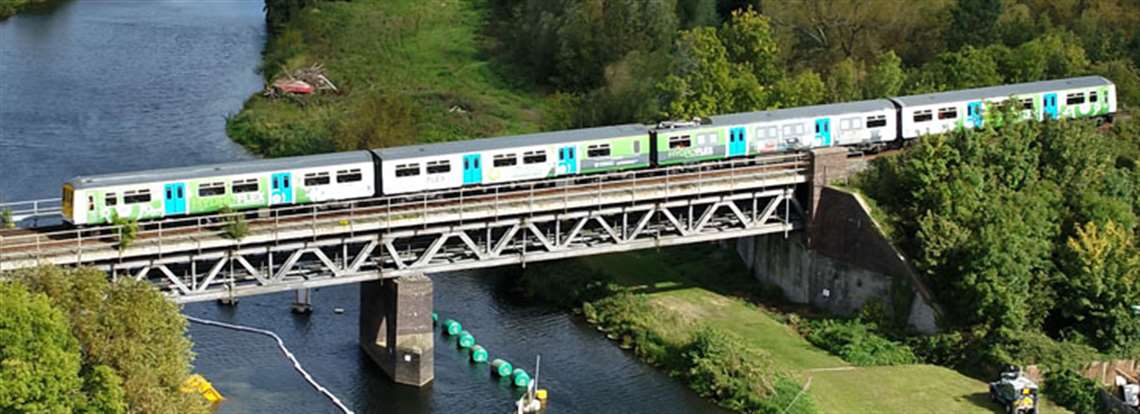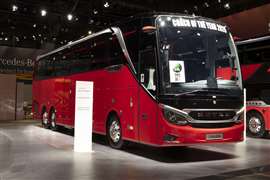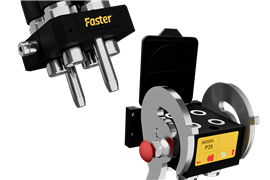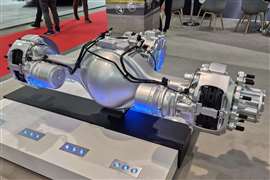UK’s First Hydrogen Train Passes Mainline Test
30 September 2020

The UK’s first hydrogen-powered train has successfully undertaken its first mainline test, achieving a top speed of 50 mph.
Originally unveiled in June 2019, the HydroFLEX project is designed to demonstrate a practical application of hydrogen as the power source for a full-size passenger train. Based on a Class 319 electric multiple unit, the HydroFLEX vehicle is fitted with hydrogen fuel tanks, a fuel cell and battery pack, to provide independent traction power capable of operation with zero carbon emissions.
HydroFLEX is led by rolling stock owner Porterbrook, in partnership with the Birmingham Center for Railway Research and Education (BCRRE) with support from Ricardo in the key area of safety case development and certification.
The HydroFLEX vehicle successfully undertook its first phase of mainline testing achieving a top speed of 50 mph, for which Porterbrook sought the assistance of Ricardo in the crucial areas of safety and certification.
In order for mainline testing to be allowed to proceed, the vehicle required approval by an EN17065 accredited certification body and an EN17020 accredited inspection body. Ricardo fulfilled these requirements with rolling stock experts preparing the vehicle Safety Case, while colleagues from Ricardo Certification undertook an assessment in accordance with RIS-2700-RST, producing an Attestation Statement along with the Safety Assessment Report as the project’s Assessment Body. This means that HydroFLEX is now able to commence with testing on Network Rail’s mainline infrastructure.
HydroFLEX was originally developed by Porterbrook and BCRRE as a response to the UK government’s challenge to remove diesel-only trains from the national network by 2040. The concept may in the future enable the electric multiple unit to operate by drawing energy from an overhead catenary or conductor rail, but transition seamlessly to zero emission self-powered operation beyond the reach of existing electrification. The vehicle could thus serve many routes currently operated using diesel power, while also providing better utilization of existing power infrastructure on routes that traverse both electrified and non-electrified sections.
The fuel cell unit of HydroFLEX is powered by hydrogen stored in high pressure tanks and oxygen is sourced from ambient air. The fuel cell converts the mixture and generates electricity of up to 100 kW for traction while generating emissions solely of pure water as a by-product. Two lithium ion battery packs store electrical energy which powers the train’s existing traction systems throughout the vehicle’s operational duty cycle.
“Ricardo is proud to have supported Porterbrook on this important project to pave the way for mainline testing of HyrdoFLEX, the UK’s first hydrogen powered train,” said Stewart Kenworthy, deputy business manager of independent assurance for Ricardo Certification. “Hydrogen offers significant potential as an energy vector to help decarbonize the railway network, substituting for diesel power systems and eliminating emissions at the point of use. We were pleased to be able to develop a vehicle safety case for the novel hydrogen fuel system, working with Porterbrook and its partners on the HydroFLEX project to address the many unique hazards associated with use of hydrogen as a fuel, in this first mainline traction power application.”
POWER SOURCING GUIDE
The trusted reference and buyer’s guide for 83 years
The original “desktop search engine,” guiding nearly 10,000 users in more than 90 countries it is the primary reference for specifications and details on all the components that go into engine systems.
Visit Now
STAY CONNECTED




Receive the information you need when you need it through our world-leading magazines, newsletters and daily briefings.
CONNECT WITH THE TEAM












